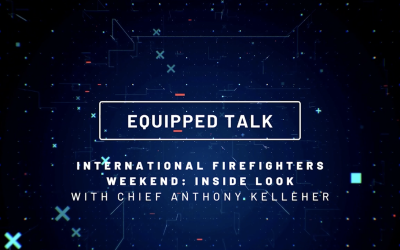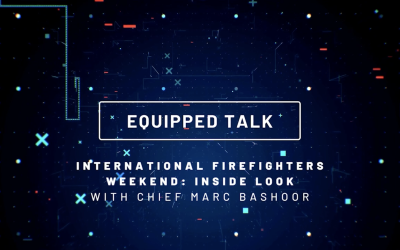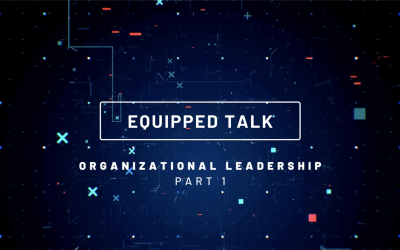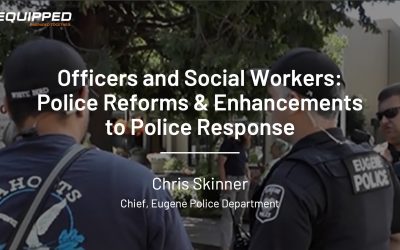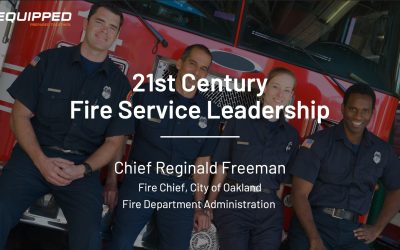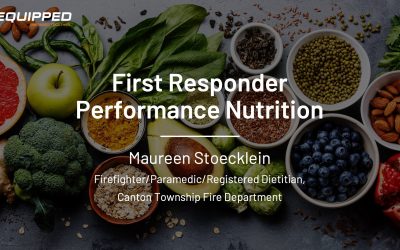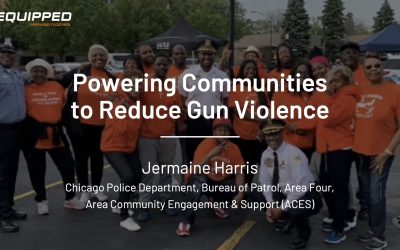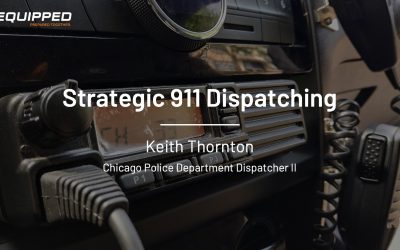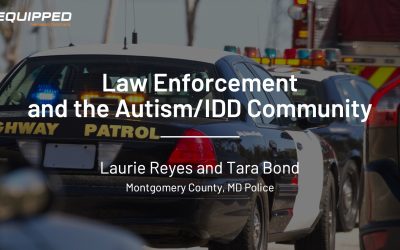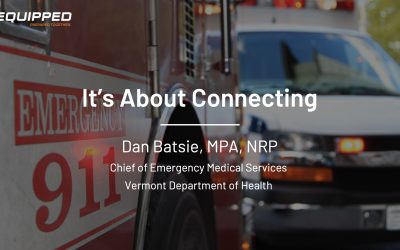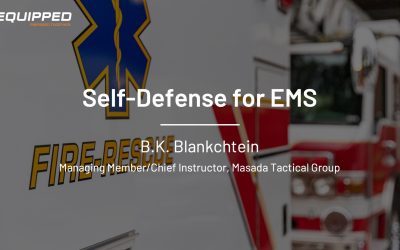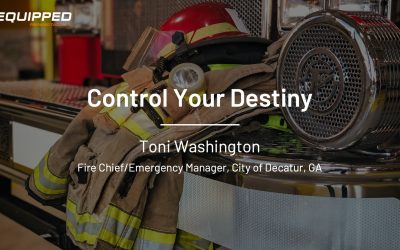Equipped Talks
This collection features stories and lessons learned from the front lines as well as advice and best practices from subject matter experts in the field of public safety and beyond.
If you or someone you know is interested in participating in this series, we’d love to hear from you. Drop us a line.
Equipped Talks
Breaking the Silence: A Talk with Jonathan Tate on First Responder Mental Health
Mental health continues to be one of the most urgent, and often overlooked, issues facing first responders. In this powerful Equipped Talk, we sit down with Jonathan Tate, a veteran DC Firefighter and founder of Food on the Stove, to explore how one firefighter turned...
International Firefighters’ Weekend: Inside Look with Chief Anthony Kelleher
A conversation between Jonathan Tate, Washington DC firefighter and founder of Food on the Stove, and Anthony Kelleher, Deputy Fire Chief, DC Fire and EMS. In his two-plus decades of experience as a firefighter and instructor, Chief Kelleher has come to believe that...
International Firefighters’ Weekend: Inside Look with Chief Marc Bashoor
A conversation between Jonathan Tate, Washington DC firefighter and founder of Food on the Stove, and Marc Bashoor, Fire Chief (ret.), Prince George’s County Fire/EMS Department. Well into Chief Bashoor’s decades-long career in the fire service, he experienced a pair...
Building Organizational Leadership: Part 2
A conversation between Lt. Jermaine Harris, Chicago Police Department, and Willie Crump, National Unit Chief for Narcotics and Contraband Smuggling, Department of Homeland Security (DHS). The law enforcement profession has faced a number of crises in recent years that...
Building Organizational Leadership: Part 1
A conversation between Lt. Jermaine Harris, Chicago Police Department, and Dr. Patrick Malone, American University’s Key Executive Leadership Programs. First responders are adept at technical thinking, but what about adaptive thinking? Learn how building a foundation...
Officers and Social Workers: Police Reforms & Enhancements to Police Response
Sometimes, the best police response isn’t police. 31 years ago, the City of Eugene, Oregon, developed an innovative community-based public safety system to provide mental health first response for crises involving mental illness, homelessness, and addiction. CAHOOTS...
Food on the Stove: Feeding the Need for Health Education
Jonathan Tate, D.C. Firefighter/EMT & Founder, Food on the Stove
Food on the Stove is a D.C.-based nonprofit founded to promote healthy lifestyle management from a holistic perspective. With programs ranging from healthy cooking demonstrations to partnerships with local farms to supply healthy food to firehouses, this firefighter-operated and focused organization has found innovative ways to fulfill its mission.
21st Century Fire Service Leadership
Reginald Freeman, Fire Chief, City of Oakland
From social justice demands, to gaps in diversity, equity, and inclusion, to a less experienced workforce, the 21st-century fire service is faced with unprecedented challenges. Chief Freeman discusses leadership principles and initiatives necessary to be successful in this ever-evolving field.
The Power of Community Policing
Cathy Lanier, Former Chief, Metropolitan Police Department, Washington, D.C.
Promoted to Chief in 2007, Lanier spent nearly a decade creating a legacy of community engagement – years that saw a 23% drop in violent crime and a homicide rate that hit a 50-year low in 2012. Here, she shares how she led the department to this success and a restoration of community faith in policing.
First Responder Performance Nutrition
Maureen Stoecklein, Firefighter/Paramedic/Registered Dietitian, Canton Township Fire Department,
First responders are tactical athletes facing daily heightened levels of job-related mental and physical stress. They are expected to be high performing individuals, navigate life or death decisions, and manage extreme trauma in highly unpredictable environments. This talk offers a comprehensive yet simple approach to meeting the unique nutrition demands of first responders.
Powering Communities to Reduce Gun Violence
Sgt. Jermaine Harris, Chicago Police Department, Area Community Engagement & Support (ACES)
Fighting crime and reducing violence takes innovation and patience. Explore how building Community Response Teams of neighborhood leaders and influencers is one of the best ways to make cities safer.
Strategic 911 Dispatching
Keith Thornton Jr., Dispatcher II, Chicago Police Department
On the evening of August 7, 2021, Thornton received a call reporting three officers being ambushed while conducting a “routine” traffic stop. The moments after revealed expert training and command of the situation, demonstrating the best in emergency response through strategic 911 dispatching.
Law Enforcement and the Autism/IDD Community
Laurie Reyes and Tara Bond, Montgomery County Department of Police
Officers Reyes and Bond provide an overview of what is now known as the Montgomery County Police Autism and Intellectual/Developmental Disabilities (IDD), Alzheimer’s, Dementia Outreach Program.
It’s About Connecting
Dan Batsie, Chief of Emergency Medical Services, Vermont Department of Health
Developing a culture of public safety relies on engagement and connecting. This inspiring talk explores how bringing people together is the foundation for building stronger and safer communities.
Prioritizing Sleep
Dr. Paul Nystrom, Emergency Medicine Specialist, Hennepin Healthcare System Inc.
Sleep is something we often cut short for any number of reasons, or even for no reason at all. We intuitively know we need to get more, but do we prioritize it? What are the downsides of not getting enough? Nystrom explains why first responders must prioritize sleep.
Self-Defense for EMS
B.K. Blankchtein, Chief Instructor, Masada Tactical Group
Over the past few years, attacks on EMS personnel responding to calls have increased significantly. EMS first responders must be prepared to protect themselves, their patients, or innocent bystanders as the situation dictates. Blankchtein covers the skills and methodologies designed specifically for the unique environment in which EMS operates.
Control Your Destiny
Toni Washington, Fire Chief/Emergency Manager, City of Decatur, GA
As one of 10 Black female fire chiefs in the U.S., Washington speaks about the the gender- and race-based obstacles she has overcome to achieve and maintain her leadership position in Decatur, GA. Learn the guiding principles Washington uses to maintain control of her destiny.
Best Practice Guides
NVFC: Training Volunteer Firefighters to be Combat Ready
The National Volunteer Fire Council, together with the International Association of Fire Chiefs’ Volunteer and Combination Officers Section (VCOS), and the International Society of Fire Service Instructors, has updated its 2012 edition. The guide includes best practices to form a blueprint for a successful training program.
American University: Re-Envisioning Police Training in the U.S.
The report argues for a need to revisit all levels of police training, including academy, in-service, mid-rank, command, and leadership. Its authors contend that this multi-level approach will ensure that everyone at every rank is keying off the same mission, vision, and strategies to ensure consistent and successful service delivery.
IAFC Report on Diversity, Equity, and Inclusion in the U.S. Volunteer and Combination Fire-Rescue Service
A recent study by The International Association of Fire Chiefs takes a deep dive into diversity, equity, and inclusion (DE&I) in the U.S. volunteer and combination fire service. Funded by a FEMA SAFER grant, the study and its accompanying report seek to help address the critical shortage of volunteers in the fire-rescue service by offering strategies for improving recruitment and retention – and, by extension, strategies for creating and maintaining inclusive, equitable, and diverse work environments.
IAFF’s Recruiting Diverse First Responders Toolkit
The International Association of Fire Fighters has compiled a step-by-step guide to getting started and building a diverse recruitment program. It includes recommended strategies, sample programs, recruitment profiles, tips, and additional resources.
IAFC’s Growing As a Leader Series: Six Ways to Build, Engage and Retain Your Team
This six-part video series from the International Association of Fire Chiefs features motivational speaker Jan Spence. Topics include teamwork and communication; generational differences; difficult people; recruitment; leading and engaging volunteers and employees; and time management.
USFA’s 2022 EMS Safety Practices Manual
The U.S. Fire Administration has released a 2022 guide that details how to develop a safety program for EMS operations. The five sections include the elements of safety; physical and mental health; infection control and hazardous materials protective equipment; emergency operations; and vehicle operations.


